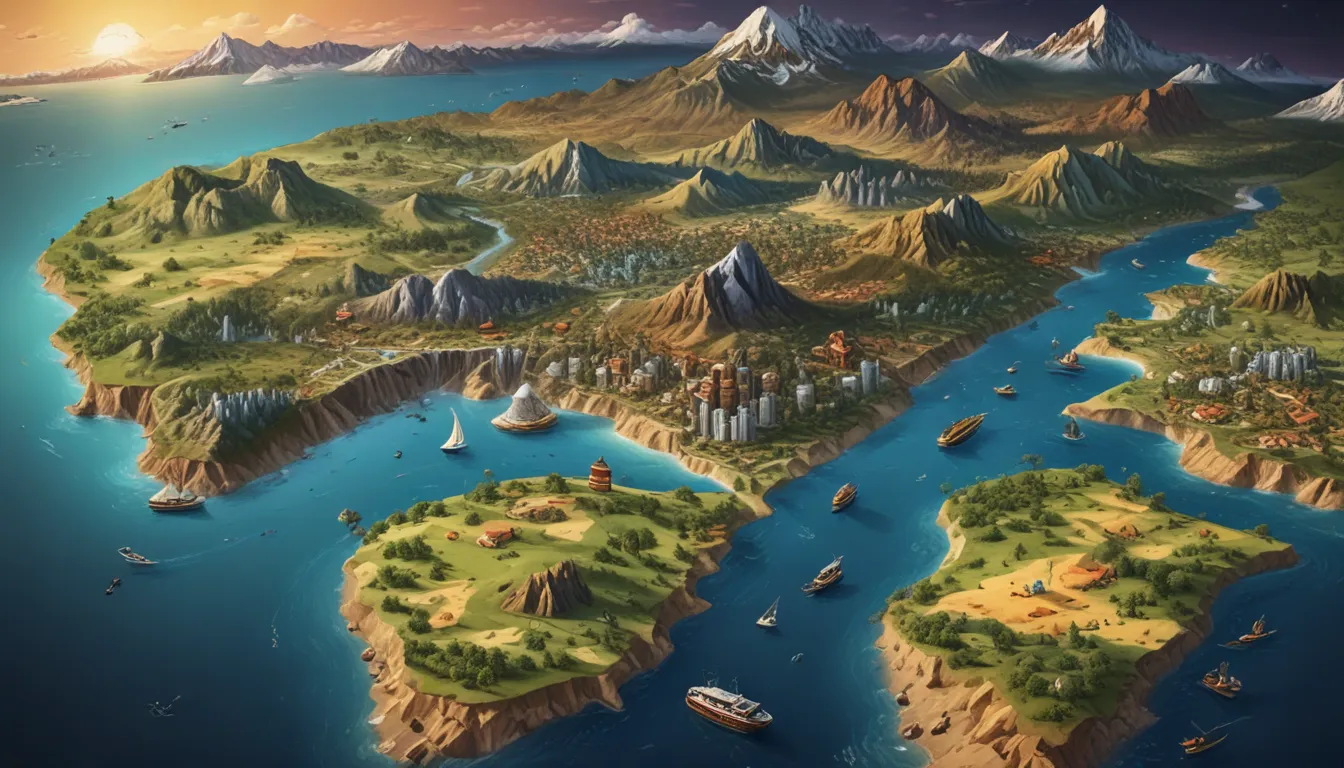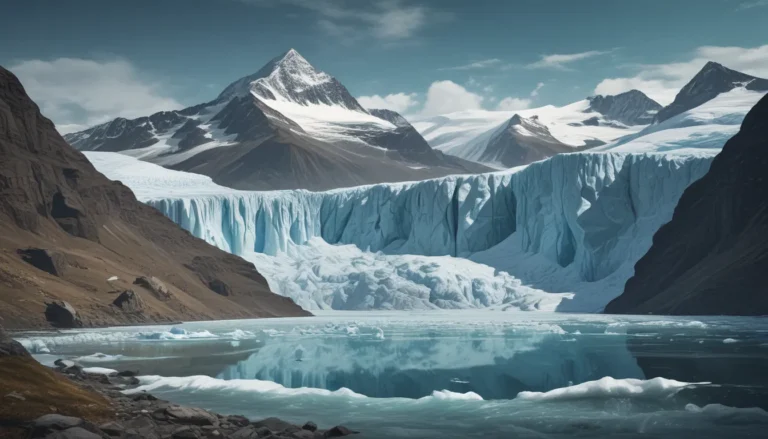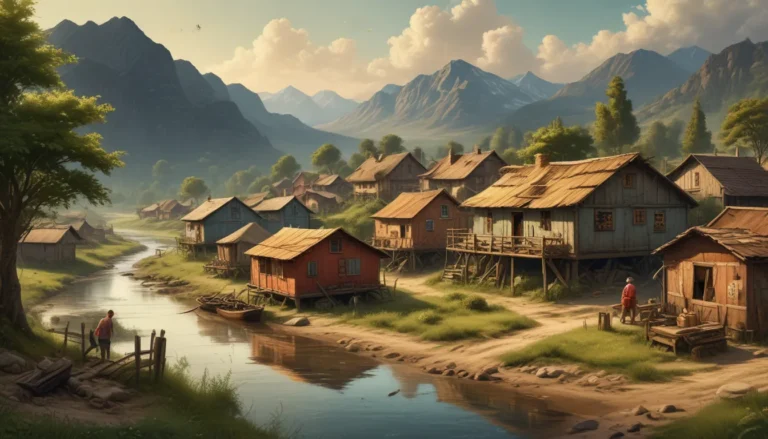A Note About Images: The images used in our articles are for illustration purposes only and may not exactly match the content. They are meant to engage readers, but the text should be relied upon for accurate information.
Are you fascinated by the mysteries of our planet’s geography? Do you find yourself intrigued by the interconnectedness of Earth’s physical features, climate patterns, and the distribution of living organisms? If so, you’re in for a treat as we explore 15 captivating facts about geographical distribution. From the diversity of species to the unequal distribution of wealth and resources, these facts offer valuable insights into the complex tapestry of our world. Get ready to embark on a journey of discovery as we unravel the fascinating world of geographical distribution.
Unveiling the Secrets of Geographical Distribution
Geographical distribution serves as a giant puzzle that helps us understand the intricacies of our planet. It influences everything from the habitats of plants and animals to the development of cultures and economies. By unraveling the patterns and connections within geographical distribution, we gain a deeper appreciation for the diverse elements that shape our world.
Climate change, natural resources, and human migration all leave their mark on geographical distribution, guiding sustainable development efforts for a more balanced and interconnected world. Let’s delve into the enchanting realm of geographical distribution and unlock its hidden treasures.
The Enigmatic Distribution of Species
-
A Symphony of Factors: The distribution of plant and animal species is a complex interplay of climate, topography, available resources, and human influence. By understanding these factors, scientists can predict the presence or absence of species in different regions, unraveling the mystery of biodiversity.
-
The Amazon’s Riches: The Amazon rainforest reigns supreme as the Earth’s biodiversity hotspot, boasting a staggering 16,000 tree species. This unparalleled diversity is a testament to the region’s tropical climate and abundant rainfall, nurturing a paradise of flora and fauna.
Tracing the Trail of Languages
- The Language Legacy: Human migration shapes the distribution of languages across the globe, offering a glimpse into ancient human movements and cultural exchanges. The tapestry of languages provides a rich tapestry of human history and interactions.
The Influence of Natural Resources
- Power of Resources: From gold to oil, fertile farmland to strategic waterways, natural resources have shaped the ebb and flow of civilizations throughout history. The distribution of these resources continues to be a driving force behind both prosperity and conflict in our modern world.
The Tapestry of Wealth Across the Globe
- An Uneven Landscape: Despite the advancements of globalization, the distribution of wealth remains deeply unequal across the globe. Disparities in economic prosperity persist, highlighting the need for more balanced and inclusive economic systems.
The Impact of Climate Change on Species
- Shifting Habitats: Climate change is causing significant disruptions in the distribution of plant and animal species. Rising temperatures and changing weather patterns compel species to migrate in search of suitable habitats, while others face the looming threat of extinction.
Unveiling the Secrets of Earthquakes
- Tectonic Tremors: Earthquakes predominantly cluster along the boundaries of tectonic plates, unleashing seismic forces that shape our planet. Subduction zones, where one plate is forced beneath another, give rise to intense geological activity, defining the distribution of earthquakes.
Human Settlements: Where Geography Meets Population
- The Gathering of Populations: Human settlements gravitate towards regions with favorable geographic features and abundant resources. Factors such as water access, arable land, and transportation routes dictate the distribution of human populations, shaping the landscapes of our societies.
Precipitation Patterns and Global Climate
- The Rainfall Riddle: Precipitation patterns sculpt the climate tapestry of our planet, defining regions as tropical, arid, temperate, or polar. These patterns influence the ecosystems and agricultural practices that thrive in different climates, painting a diverse picture of our Earth.
Infectious Diseases and Their Distribution
- A Global Epidemic: The distribution of infectious diseases, from malaria to COVID-19, is influenced by a myriad of factors. Climate, population density, healthcare infrastructure, and human behavior all play a role in shaping the spread of these diseases across regions.
Unveiling the Wrath of Natural Disasters
- Nature’s Fury: Tornadoes, hurricanes, earthquakes, and other natural disasters strike certain regions with greater frequency due to geographical factors and plate tectonics. Knowing these patterns is crucial for communities to prepare and mitigate the risks posed by these catastrophic events.
Cultural Practices Across the Globe
- A Mosaic of Cultures: Cultural practices and traditions, from cuisine to clothing and religious rituals, reflect the diversity of human societies. The distribution of these practices paints a vivid picture of our rich cultural heritage and the evolution of traditions over time.
Harnessing Energy for Sustainable Development
- Powering Progress: Access to energy resources is essential for sustainable development, encompassing fossil fuels, renewable energy sources, and electricity networks. A balanced distribution of energy resources is vital for fostering socioeconomic growth and environmental stewardship.
Nourishing the World with Agricultural Crops
- Harvesting Diversity: The distribution of agricultural crops is intricately tied to climate, soil conditions, and land availability. By understanding the distribution of crops, policymakers can identify areas of food security and address challenges in meeting the nutritional needs of growing populations.
Mapping Global Trade Routes
- Trade Winds of Commerce: Ancient and modern trade routes have shaped global economies, fostering international trade and cultural exchanges. The distribution of these routes, whether by land or sea, weaves a web of interconnectivity that links nations and drives economic systems.
Navigating the Wonders of Geographical Distribution
As we unravel these 15 intriguing facts about geographical distribution, we gain a deeper understanding of the intricate web that connects our world. From the distribution of species and resources to the impacts of climate change and human migration, geographical distribution serves as a guiding force in shaping our environment and societies. By delving into its intricacies, we glean valuable insights that can steer us towards sustainable development and a more interconnected world.
Embracing the Marvels of Geography
Geographical distribution unveils a world of wonders, with each fact offering a glimpse into the diverse elements that shape our planet. The study of geographical distribution not only provides insights into the patterns and connections between Earth’s features but also guides us in making informed decisions about conservation, resource management, and urban planning.
By exploring the distribution of various phenomena, we embark on a journey of discovery that reveals the beauty and complexity of our world. Whether it’s the distribution of resources, cultural practices, or species habitats, understanding the nuances of geographical distribution empowers us to preserve our planet’s treasures and foster a harmonious coexistence with nature.
FAQs:
- What is geographical distribution?
Geographical distribution refers to how different elements, such as landmasses, species, or cultural practices, are spread across the Earth’s surface. It offers insights into the intricate patterns and connections that shape our world.
- How does geographical distribution impact biodiversity?
Geographical distribution plays a pivotal role in determining the biodiversity of a region by influencing factors such as resource availability, climate conditions, and species dispersal. It shapes the rich tapestry of life on Earth.
- Why is studying geographical distribution important?
Studying geographical distribution helps us uncover the relationships between various elements on our planet, from geological formations to biological diversity. It provides valuable insights into the complex interplay of factors that shape our environment.
- Are there global patterns in geographical distribution?
Yes, there are distinct global patterns in geographical distribution, reflecting the uneven distribution of landmasses, species habitats, and cultural practices across the Earth’s surface. These patterns offer valuable insights into our planet’s diversity.
- How does geographical distribution influence human settlement?
Geographical distribution influences the availability of resources, climate suitability, and land conditions that shape human settlements. It determines the location and distribution of cities, towns, and villages, impacting the landscapes of human societies.
Unravel the mysteries of geographical distribution and embark on a captivating journey through the interconnected tapestry of our world. From the depths of the Amazon rainforest to the peaks of cultural diversity, geography offers a profound insight into the wonders that encompass our planet. Embrace the marvels of geographical distribution and embark on a voyage of discovery that unveils the hidden treasures of Earth’s intricate landscapes.






